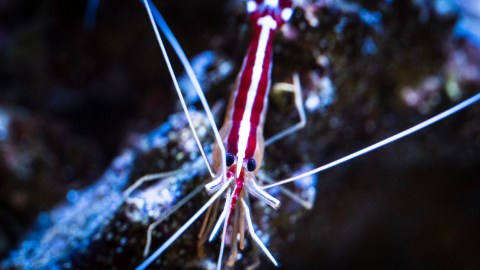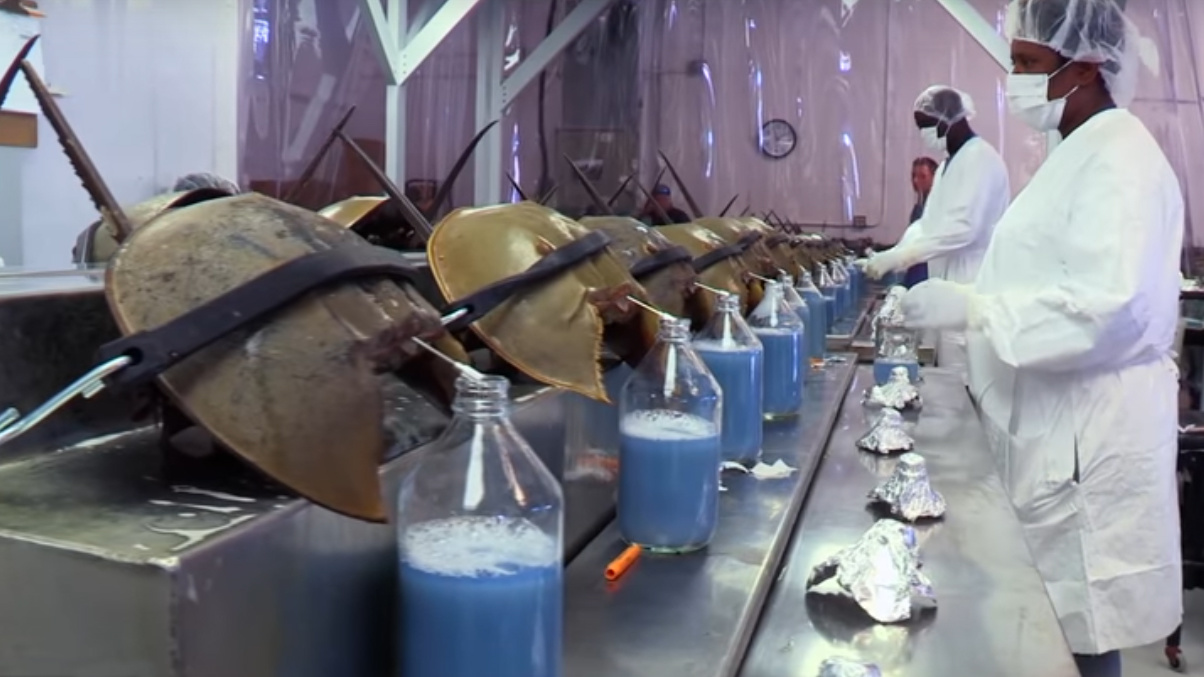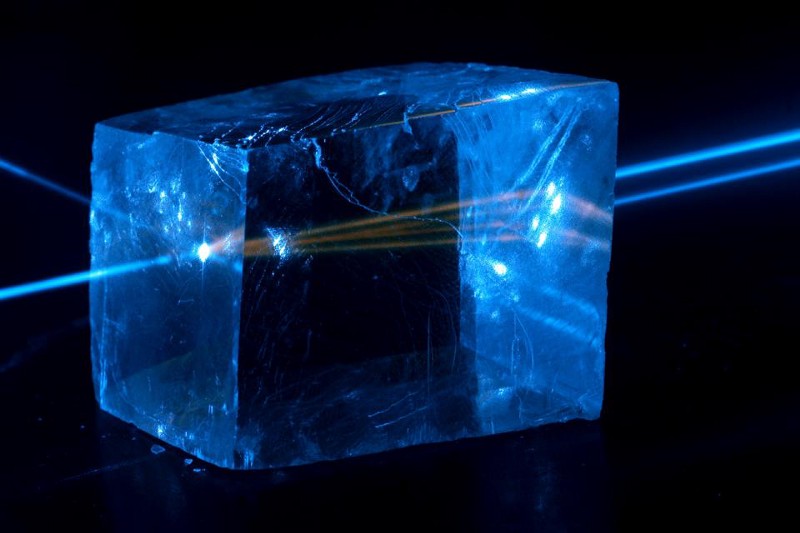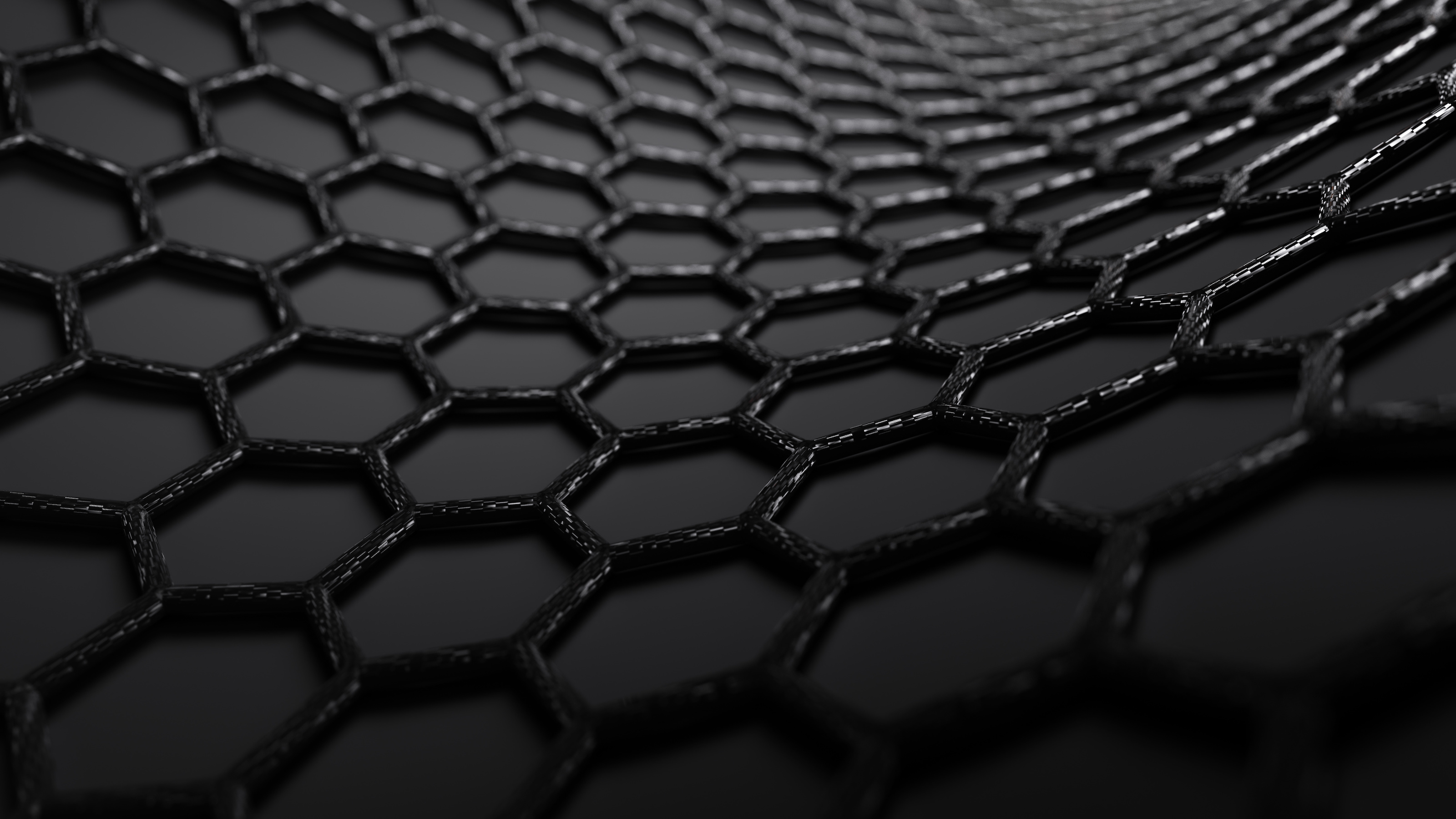Why the Pacific cleaner shrimp could help create ultra-reflective sunscreen

- The Pacific cleaner shrimp features one of the most vibrant whites in the animal kingdom, doubly impressive considering it manifests underwater.
- Scientists used cryo-scanning electron microscopy to reveal the brilliant bioengineering behind the coloration.
- The discovery could be adapted to create a novel whitening agent for food or a super-reflective sunscreen that simultaneously keeps the skin cool.
In the ocean, the Pacific cleaner shrimp stands out from the crowd, with vibrantly white coloration on its back and its whisker-like antennae. An international team of scientists recently revealed the intricate biological engineering behind this brilliant white, publishing their findings in the journal Nature Photonics.
As its name suggests, the Pacific cleaner shrimp “cleans” fish, eating parasites and dead tissue off their skin. The crustacean‘s intense white coloration serves as an eye-catching advertisement, attracting fish to partake of its mutually-beneficial janitorial services.
The vibrant color of the Pacific cleaner shrimp is doubly impressive considering that it manifests in a light-impaired medium. Water greatly limits how far particles of light (photons) can travel. Within the first 10 meters, water absorbs more than 50% of the visible light energy. Beyond 200 meters, there is rarely any significant light at all.
Objects appear white when they reflect all light. But with fewer particles of light to reflect in the ocean, it’s difficult to have such a brilliant white. That means that whatever is in the cuticle (skin) of the Pacific cleaner shrimp must be extremely reflective.
It also must be extremely refractive — bending light. Brilliant whiteness requires an object to bend light much more than the medium in which it exists. Air is not very refractive, but water is. That’s why when you immerse a white object in water, its color dulls, almost appearing gray.
Remarkable bioengineering
To uncover the inner workings of Pacific cleaner shrimp’s white cuticle, the team of scientists — led by Dr. Ben Palmer, an Assistant Professor in the Department of Chemistry at Ben-Gurion University of the Negev, and his student, Tali Lemcoff — utilized cryo-scanning electron microscopy. This involved deep-freezing white tissues from the shrimp and then blasting them with focused beams of electrons. The bombardment produces signals upon interacting with atoms in the sample that can be distilled into a remarkably sharp nano-scale image.
What they saw within those images was some truly remarkable bioengineering. Packed within the shrimp‘s cells were spherical particles about 300 nanometers wide, each containing stacks of molecules organized in spokes almost like a bicycle. The positioning overcomes a phenomenon called optical crowding, where light reflectance falls when light-scattering structures are packed too densely. If you were trying to scatter light (thus creating white), it’s difficult to conceive of a more efficient design.
“The shrimp has overcome a seemingly fundamental hurdle in optics by creating particles with this special arrangement of molecules,” Dr. Palmer said in a statement. “Now the question is, how can we replicate this effect for creating new materials we could use as food additives in white bread, or in white paint and other applications?”
Palmer envisions replacing titanium dioxide, a whitening agent, with an organic compound inspired by the Pacific cleaner shrimp. Titanium dioxide is used in a range of food products, as well as cosmetics and paint. In August 2022, it was banned in the European Union over concerns that it could cause cancer, but the FDA still allows it in the U.S. Scientific evidence suggests that titanium dioxide poses no harm at the extremely low amounts at which it’s utilized.
Diederik S. Wiersma, a physicist specializing in spectroscopy at the University of Florence, offered another potential use in a viewpoint released alongside the recent study.
“One could imagine developing a novel sun cream for humans that protects the skin from UV radiation while providing a pleasant cooling effect.”





